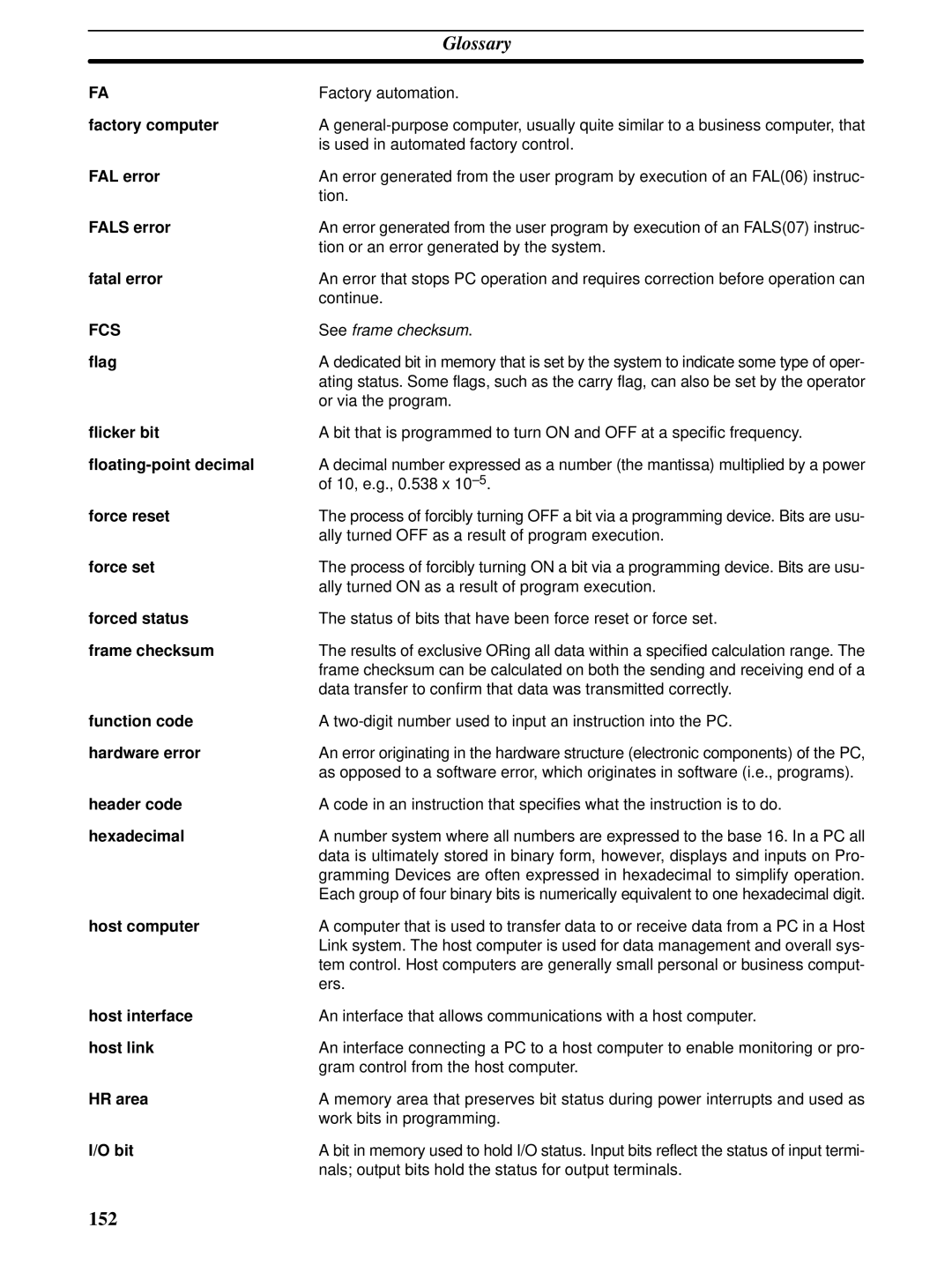| Glossary | |
|
|
|
FA | Factory automation. | |
factory computer | A | |
| is used in automated factory control. | |
FAL error | An error generated from the user program by execution of an FAL(06) instruc- | |
| tion. | |
FALS error | An error generated from the user program by execution of an FALS(07) instruc- | |
| tion or an error generated by the system. | |
fatal error | An error that stops PC operation and requires correction before operation can | |
| continue. | |
FCS | See frame checksum. | |
flag | A dedicated bit in memory that is set by the system to indicate some type of oper- | |
| ating status. Some flags, such as the carry flag, can also be set by the operator | |
| or via the program. | |
flicker bit | A bit that is programmed to turn ON and OFF at a specific frequency. | |
A decimal number expressed as a number (the mantissa) multiplied by a power | ||
| of 10, e.g., 0.538 x | |
force reset | The process of forcibly turning OFF a bit via a programming device. Bits are usu- | |
| ally turned OFF as a result of program execution. | |
force set | The process of forcibly turning ON a bit via a programming device. Bits are usu- | |
| ally turned ON as a result of program execution. | |
forced status | The status of bits that have been force reset or force set. | |
frame checksum | The results of exclusive ORing all data within a specified calculation range. The | |
| frame checksum can be calculated on both the sending and receiving end of a | |
| data transfer to confirm that data was transmitted correctly. | |
function code | A | |
hardware error | An error originating in the hardware structure (electronic components) of the PC, | |
| as opposed to a software error, which originates in software (i.e., programs). | |
header code | A code in an instruction that specifies what the instruction is to do. | |
hexadecimal | A number system where all numbers are expressed to the base 16. In a PC all | |
| data is ultimately stored in binary form, however, displays and inputs on Pro- | |
| gramming Devices are often expressed in hexadecimal to simplify operation. | |
| Each group of four binary bits is numerically equivalent to one hexadecimal digit. | |
host computer | A computer that is used to transfer data to or receive data from a PC in a Host | |
| Link system. The host computer is used for data management and overall sys- | |
| tem control. Host computers are generally small personal or business comput- | |
| ers. | |
host interface | An interface that allows communications with a host computer. | |
host link | An interface connecting a PC to a host computer to enable monitoring or pro- | |
| gram control from the host computer. | |
HR area | A memory area that preserves bit status during power interrupts and used as | |
| work bits in programming. | |
I/O bit | A bit in memory used to hold I/O status. Input bits reflect the status of input termi- | |
| nals; output bits hold the status for output terminals. | |
152
